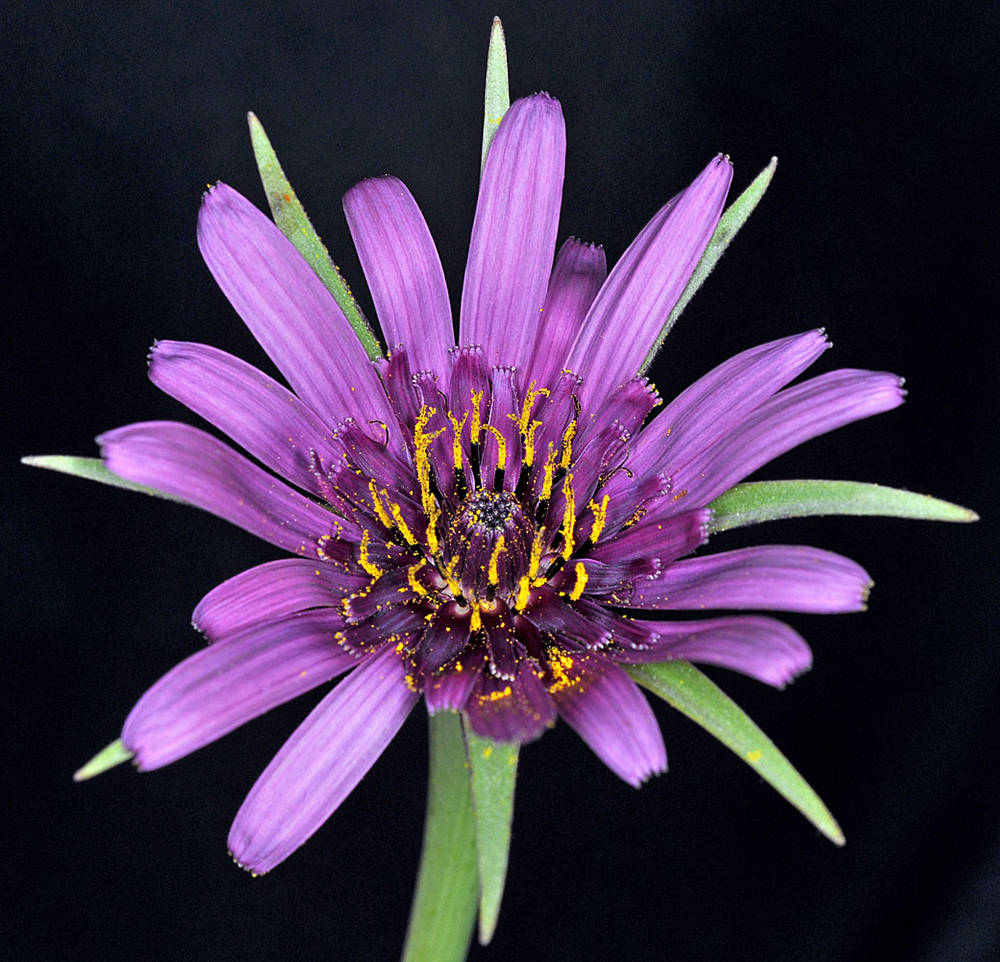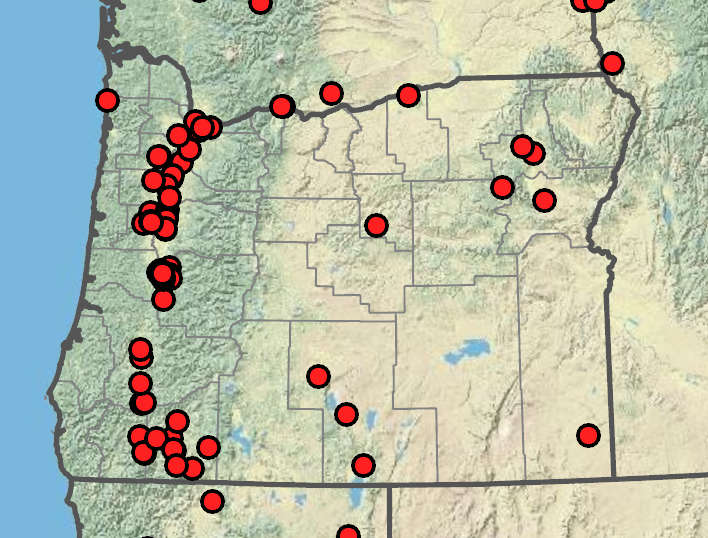Tragopogon porrifolius
Tragopogon pratensis
oyster plant, salsify
Jack-go-to-bed-at-noon, meadow salsify
glabrous;
tips straight.
tomentose or floccose when young, glabrous with maturity;
tips recurved.
inflated distally.
slightly or not inflated.
conic.
usually campanulate.
corollas purple; outer ligules not surpassing phyllaries.
corollas pale yellow; outer ligules equaling or surpassing phyllaries.
1–2 cm.
1.5–2.5 cm.
=12.
=12.
Tragopogon porrifolius
Tragopogon pratensis
Roadsides, fields, disturbed areas. Flowering Apr–Jun. 50–1500 m. BW, Col, ECas, Owy, Sisk, WV. CA, ID, NV, WA; throughout most of North America; Europe. Exotic.
See also T. mirus discussion.
Roadsides, fields, disturbed areas. Flowering May–Jul. 0–1500 m. WV. CA, ID, NV, WA; throughout most of North America; Europe. Exotic.
Similar to Tragopogon mirus, allotetraploid hybrid speciation has occurred between T. pratensis and T. dubius. The result (T. miscellus) has been documented only near Pullman, WA. Because the parental species and T. miscellus are similar morphologically (all with yellow flowers), populations of the latter may be overlooked. Tragopogon miscellus can be fairly easily identified, however, by the combination of leaves with recurved tips and outer ligules not surpassing the phyllaries.
Stephen Meyers
Stephen Meyers
- Local floras:
BC,
CA,
OR,
WA
- Local Web sites:
CalFlora,
CalPhotos,
Flora NW,
PNW Herbaria,
Turner Photog.
WildflowerSearch
iNaturalist (observations)
USDA Plants Database
- LBJ Wildflower Center
- SEINet
- Plants of the World Online
- Encyclopedia of Life
- Wikipedia
- Google Image Search
- Local floras:
BC,
CA,
OR,
WA
- Local Web sites:
CalFlora,
CalPhotos,
Flora NW,
PNW Herbaria
WildflowerSearch
iNaturalist (observations)
USDA Plants Database
- LBJ Wildflower Center
- SEINet
- Plants of the World Online
- Encyclopedia of Life
- Wikipedia
- Google Image Search





